Science and literacy
By Mary Bigelow
Posted on 2015-02-24
Every teacher is a literacy teacher. Each discipline, including science, has a language and strategies for communicating both verbal and nonverbal information. As the TST journal editor notes: “…it turns out that reading and writing comprise over half of the work of practicing scientists and engineers.” Reflecting this reality, Obtaining, evaluating, and communicating information is one of the Scientific and Engineering Practices in the NGSS. The two secondary journals this month focus on communication and literacy in science, while the elementary journal has ideas for studying (and communicating about) energy and matter.
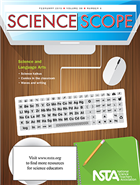 Science Scope: Science and Language Arts
Science Scope: Science and Language Arts
This month’s Guest Editorial Our Science Story: When inquiry meets the Common Core describes how a middle school uses science journaling as a means of integrating science and literacy. Using Disciplinary Literacy Strategies to Enhance Student Learning illustrates strategies such as concept maps and summarization. Science Haiku Art provides examples of a non-traditional way for students to communicate their learning. And if vocabulary is a challenge for students, take a look at Tried and True: The many faces of word walls in middle school science classrooms.
Here are some additional SciLinks that provide content information and suggestions for additional activities and investigations related to this month’s featured articles:
- Reading and Writing Alignment Across Content Areas [SciLinks: Characteristics of Living Things]
- Teaching Graph Literacy Across the Curriculum [SciLinks: Graphing]
- The Who, What, When, Where, and How of Waves [SciLinks: Waves, Wavelength, Reflection and Refraction]
- Comic Relief: Using Comics and Illustrated Trade Books to Support Science Learning in First-Year English Language Learners [SciLinks: Rocks, Earth’s Structure]
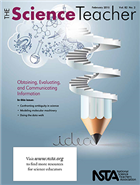
The Science Teacher: Obtaining, Evaluating, and Communicating Information
TST’s Career of the Month describes the work of a Science Writer.
Here are some additional SciLinks with weblinks for content information and suggestions for additional activities and investigations related to this month’s featured articles:
- Sinking In and Beyond an Equation [SciLinks: Buoyancy, Density, Density of Water, Graphing Data]
- Confronting Ambiguity in Science [SciLinks: Water Quality, Watersheds]
- Doing the Data Walk [SciLinks: Velocity, Motion]
- Modeling Molecular Machinery [SciLinks: Proteins, DNA Structure and Function, Protein Synthesis]
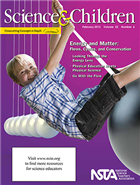
This month’s Science & Children focuses on Energy and Matter, two concepts that can be challenging for younger students.
The article Science 101: How Should We Label Different Kinds of Energy? has a good refresher on the topic. And here are some additional SciLinks with weblinks for content information and suggestions for additional activities and investigations related to this month’s featured articles:
- Looking Through the Energy Lens [SciLinks: Energy, Energy Transformations]
- Go With the Flow [SciLinks: Ecosystems, Energy Pyramid, Food Chains, Food Webs]
- Physical Education Meets Physical Science [SciLinks: Forces and Motion, Simple Machines]
- How Does My Brain Pay Attention [SciLinks Human Brain]
- Inquiry-Based Science and the Next Generation Science Standards: A Magnetic Attraction [SciLinks: Magnets, Magnetic Materials]
- Teaching Through Trade Books: Understanding Matter and Energy [SciLinks: States of Matter, Describing Matter, Energy Transformations]
- The Early Years: Where does the “warm” go? [SciLinks: Heat and Temperature]
One of the many benefits of being an NSTA member is having access to all of the journals (including past issues) online. Regardless of the grade level you teach, the journals have ideas for authentic activities and investigations that can be used, adapted, or extended for different levels of student interest and experience. Most of the activities are aligned with the NGSS.
Every teacher is a literacy teacher. Each discipline, including science, has a language and strategies for communicating both verbal and nonverbal information. As the TST journal editor notes: “…it turns out that reading and writing comprise over half of the work of practicing scientists and engineers.” Reflecting this reality, Obtaining, evaluating, and communicating information is one of the Scientific and Engineering Practices in the NGSS.
Meet Me In the Middle Day: Coming to #NSTA15 Chicago, March 13, 2015
By Guest Blogger
Posted on 2015-02-24
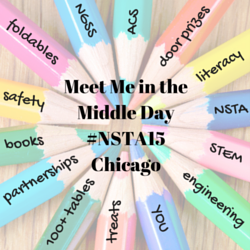 Calling all middle school teachers! If you’ll be attending the NSTA National Conference on Science Education in Chicago, then please join me at the Meet Me in the Middle Day on Friday, March 13 from 10:00 am-4:00 p.m. This “conference within a conference” is brought to you by the National Middle Level Science Teachers Association and the NSTA Committee on Middle Level Science Teaching who have partnered up to bring you a day full of fun and learning.
Calling all middle school teachers! If you’ll be attending the NSTA National Conference on Science Education in Chicago, then please join me at the Meet Me in the Middle Day on Friday, March 13 from 10:00 am-4:00 p.m. This “conference within a conference” is brought to you by the National Middle Level Science Teachers Association and the NSTA Committee on Middle Level Science Teaching who have partnered up to bring you a day full of fun and learning.
Those of us who teach in the middle know that it is education’s best kept secret–it’s hard not to have fun when surrounded by energetic kids who are starting to be able to grasp abstract concepts. We also know how challenging it can be at times to find lesson that are perfectly aligned to the age level we teach. Meet Me in the Middle Day (MMITM Day) will feature a dozen sessions geared towards meeting the middle school science teacher’s unique needs. This Who’s Who in Science Education will feature Page Keeley, Christine Royce, Ken Roy, Michael Bowen, Dick Moyer, and many more. You’ll also have an opportunity to learn how to make foldables from Dinah Zike’s organization and learn about engineering practices in middle school chemistry from the American Chemistry Society. We’ve carefully selected some fabulous presentations for you, including:
- Formative Assessment
- Merging Literacy and Science
- Science Safety
- Data Literacy
- Building Better Partnerships with Your Administrator
- Foldables
- Everyday Engineering
- Engineering Practices
- Science on a Shoestring
- NGSS and You
- NSTA Learning Center
Be sure to also check out the Round Table discussions that will run from 10:15-10:45 a.m. and 11:00-11:30 a.m. Round Table discussions offer you a chance to sit down and interact with table leaders on a variety of topics.
We’ll end the day with a bang as nearly 100 presenters eagerly to share their ideas during the Middle Level Share-a-Thon from 2:00-4:00 p.m. in Vista S406a. We’ll have lots of yummy treats and dozens of door prizes that include a microscope, educational software, NSTA books, NSTA memberships, and an iPad. Author Nicolas Nicastro (author of Circumference) will also be on hand for the event.
This day-long celebration of middle school science is brought to you with generous support from Carolina Biological, It’s About Time, Lab-Aids, and PASCO.
For additional details about the event, please go to nmlsta.org. Be sure to plan on attending from 10:00 a.m. to 4:00 p.m. on Friday, March 13 in McCormick Place (Convention Center) at Vista S406a. I look forward to seeing you there!
Patty McGinnis (pattymcginnis1@gmail.com); NSTA Middle Level Science Teaching Division Director
The mission of NSTA is to promote excellence and innovation in science teaching and learning for all.
Follow NSTA
| |
|
|
|
|
|
|
Answers and questions
By Mary Bigelow
Posted on 2015-02-22
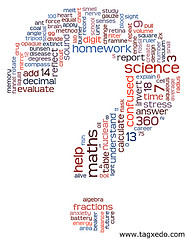 My middle school students have lots of questions in class, which is not a problem. But I’m torn between trying to provide the answers (sometimes I feel like a live version of Wikipedia with lots of empty entries) and telling them to figure it out for themselves (which discourages some students). Do you have some suggestions for helping students to learn to think and find information for themselves? —K., Ohio
My middle school students have lots of questions in class, which is not a problem. But I’m torn between trying to provide the answers (sometimes I feel like a live version of Wikipedia with lots of empty entries) and telling them to figure it out for themselves (which discourages some students). Do you have some suggestions for helping students to learn to think and find information for themselves? —K., Ohio
Teachers need to walk a fine line between helping students and enabling them. Part of the art of teaching is knowing when to provide a straightforward answer and when and how to encourage students to think and explore on their own.
Some students become dependent on teachers, especially during an investigation or unfamiliar task, constantly asking procedural questions for verification: “Is this correct?” “Is it OK if I…?” If what they’re asking about could lead to a dangerous situation, a straightforward answer is best: “I will show you the correct way to…” or “Yes, you must wear eye protection.”
After you’ve gone over directions for an activity, it’s frustrating when students raise their hands and ask, “What are we supposed to do?” If you repeat the directions, they learn they don’t have to pay attention. If you say, “I already told you. Figure it out,” students may assume other kinds of questions will get the same response, or they may do something potentially dangerous on their own . Model how to review the printed directions, ask a partner, or refer to the rubric and encourage them to do so.
For factual questions, how you could respond depends on the type of question. For example, during a discussion or activity on circulation, a student might ask how many blood vessels are in the body. Even if you have that knowledge, this could be a good question for students to investigate, and the Internet makes this a much easier process. If a student searches on the phrase “blood vessels in the body,” the first hit is from the Franklin Institute and the topic is discussed there. You could verify that this is a reputable source for the answer to a question about the heart and circulation, and students can read more about the topic.
Another strategy is to pose the question to the whole class: “Marco is wondering about the differences between wolves and coyotes. Does anyone have any information that would help him?”
If students pose questions that don’t relate to the current topic or if time is an issue, use a section of a bulletin board or wall space as a “parking lot.” Ask the student to write the question on a sticky note or index card and add it to the parking lot to be addressed at a later time. Periodically, revisit the parking lot to look at the topics and encourage students to investigate them.
If a student asks a question for which you don’t know the answer, it’s OK to say, “That’s an interesting question, but I’m not sure how to answer it. What do you think? Does anyone else have an idea?” If the question is related to the lesson, you could model how you would go about finding information. If it’s not related, add it to the parking lot for later.
I recently joined a Facebook group on bird identification that uses elaboration and questions rather than straightforward answers. People submit photos of birds they’ve seen with the location and other observations, including an idea of what it could be. The rules for responding are enforced—members can’t respond with only the correct answer (the name of the bird). They must ask about or note field characteristics that would help the questioner with identification. For example, “Look at the color of the head and note the presence of wingbars.” If the identification is correct, a possible response could be, “Yes, you can tell it’s a canvasback because of the red head and white body.” So rather than the original questioner getting a short response, the rest of the birders in the group are learning, too.
I’ve learned a lot from the questions of others with this technique—and I now know the differences between Cooper’s and Sharpshin Hawks! Applying this strategy to the wolf/coyote question above, the teacher could ask what the animals have in common and use the observations to guide a search for additional information.
Challenging Perceptions in the STEM Classroom
By Becky Stewart
Posted on 2015-02-21
 As a female STEM graduate myself (geology), I’ve been thinking a lot lately about how to encourage more women and minorities to get involved with STEM classes and potential careers. I was fortunate that my first job out of college was at the American Geosciences Institute, editing their database of journal articles from around the world. I have never had to deal with gender bias in my career, unlike many female scientists.
As a female STEM graduate myself (geology), I’ve been thinking a lot lately about how to encourage more women and minorities to get involved with STEM classes and potential careers. I was fortunate that my first job out of college was at the American Geosciences Institute, editing their database of journal articles from around the world. I have never had to deal with gender bias in my career, unlike many female scientists.
There are a number of factors in the under representation of women and minorities in STEM fields, and the reasons pile up long before people start STEM careers. In elementary schools, teachers may have unconscious biases that they transfer to their students. These biases can result in young girls’ feelings that science and math careers aren’t for them. These same kinds of unconscious biases can be stacked against people of color. Often, these unconscious biases are reinforced by teachers’ own feelings of anxiety with respect to science and math. One study found that undergraduate elementary education majors have high levels of math anxiety that they may transfer to students.
Dislodging Unproductive Beliefs
By the time students get to your middle and high school classrooms, you’re inheriting a number of unproductive beliefs that they may hold. Your female students have been exposed to the message that girls aren’t interested in STEM. Your minority students have heard similar messages. There is increasing evidence that these messages are just plain wrong. For example, a longitudinal study has found that globally, girls outperform boys in reading, math, and science. It’s important to try to change these beliefs, because the participation of all people is needed to come up with innovative solutions to pressing challenges.
Diversity in workplaces helps companies foster innovation and compete globally. Another important reason to increase diversity in STEM fields is to alleviate the problem of female minority scientists being mistaken for janitors in their own labs. The issue has broader economic and social implications too, because access to a STEM career in most cases brings a higher salary. If female and minority students don’t get the science and math background they need in school they will not be eligible for those higher salaries. Increasing diversity may be an effective way to alleviate social inequality. These issues are not just a concern in the United States, as similar debates are underway in England as well as in India.
Initiatives for Change
There are a number of initiatives in place to change perceptions about the role of women and minorities in STEM fields. The MIT Summer Research Program is open to undergraduate students, with the aim of encouraging them to pursue graduate degrees. And there are programs for younger students as well. Brookhaven National Lab offers a STEM Prep program for minority students in New York City. A number of programs, some specifically for women, are aggregated here. Coded by Kids offers weekly web development classes and summer camps to disadvantaged students in Philadelphia. An organization called Building Diversity in Science has created a curriculum called Optimizing STEM Students for high school juniors and seniors; it aims to equip students with skills to succeed in STEM fields.
In your own classrooms, consider highlighting the work of important female and minority STEM researchers. Your students need to see that the STEM fields are populated with researchers of all backgrounds. The Lady Paragons website produces a Women in STEM podcast that is worth telling your students about. A blog post by an astronomy postdoc describes her Rising Stargirls program for young middle school girls of color, and a YouTube video showcases five black chemists who changed the world. A history of African Americans in meteorology can be found here. Famed science evangelist Ainissa Ramirez has written a useful article on things you can do in your classroom to help change students’ perceptions of who scientists are and where to look for examples of female and minority scientists. She has also compiled a list of black scientists and inventors that you can share with your students.
Shape the Future
As teachers, you have a unique opportunity to shape your students’ futures. I hope you find these resources useful. All of your students should leave your classrooms knowing that even if a STEM career isn’t for them personally, there are others like them who are being successful at it.
Produced by the National Science Teachers Association (NSTA), The STEM Classroom is written by science writer Becky Stewart as a forum for ideas and resources that middle and high school teachers need to support science, technology, engineering, and math curricula. If you enjoy these blog posts, follow Becky Stewart on Twitter (@ramenbecky). Fans of the old version of The STEM Classroom e-newsletter can find the archives here.
Follow NSTA
| |
|
|
|
|
|
|
First-Timer Tips for #NSTA15 Chicago
By Mary Bigelow
Posted on 2015-02-17
 Are you attending the 2015 NSTA National Conference on Science Education in Chicago March 12–15? At this point, you should be registering, making arrangements for lodging and transportation, and thinking about your lesson plans for the substitute (if you haven’t done so already).
Are you attending the 2015 NSTA National Conference on Science Education in Chicago March 12–15? At this point, you should be registering, making arrangements for lodging and transportation, and thinking about your lesson plans for the substitute (if you haven’t done so already).
If this is the first time you’ve attended the national conference, it can be overwhelming at first. Here are some suggestions to consider before you go, updated from last year:
- Consider attending the first–timers session on the first day. This year, Bill Badders is hosting the session Is This Your First NSTA Conference? on Thursday, March 12, 8:00–9:00 AM in the McCormick Place W183a/b. It’s worth the time—you’ll meet people to share the conference with, and there will be great door prizes.
 Add the NSTA Conference page to your bookmarks or favorites. Be sure to check out the Conference Newcomer’s information.
Add the NSTA Conference page to your bookmarks or favorites. Be sure to check out the Conference Newcomer’s information.- Decide what you’d like to focus on at the conference: What information do you need about the Next Generation Science Standards? What content, practices, or crosscutting concepts do you want to know more about? What topics do your students struggle with? Are you looking for new digital resources, textbooks, or equipment? Get suggestions from your colleagues, too. Ask your students what you should learn more about (related to science, of course!).
- Then go to the conference website and use the Session Browser/Scheduler to look at the session descriptions. You can print out a personal schedule or add the session information to your smartphone calendar (mine is getting full already). Pick a few sessions for each timeslot, in case the rooms are full. There are several conference venues (the conference center and several hotels), so allow travel time between sessions.
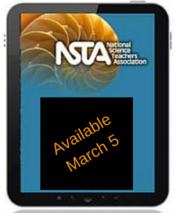 After March 5, download the NSTA conference app to your smartphone or tablet. Search sessions to build a schedule that integrates with your calendar; access maps of the convention center, hotels, and exhibit hall, share the play–by–play with social media, complete session evaluations, and more.
After March 5, download the NSTA conference app to your smartphone or tablet. Search sessions to build a schedule that integrates with your calendar; access maps of the convention center, hotels, and exhibit hall, share the play–by–play with social media, complete session evaluations, and more.- Preview the Conference Transcript section on the conference site to access online session evaluations and tools to track your professional development. This is a great way to show your administrators which sessions you attended—my principal was always impressed that I was at sessions all day into the late afternoon and on Saturday and Sunday!
What to Take?
 An empty bag—preferably one with wheels—if you know you can’t resist picking up any brochures, handouts, and session materials you encounter (resistance can be futile), although many presenters and vendors are now posting their handouts online.
An empty bag—preferably one with wheels—if you know you can’t resist picking up any brochures, handouts, and session materials you encounter (resistance can be futile), although many presenters and vendors are now posting their handouts online.- Address labels are handy for sign–up sheets and marking your program and other materials.
- If you don’t have any business cards, get some or make your own. Be sure to include your e–mail address, twitter name, and what and where you teach. These are great to hand out when you’re networking with other teachers, presenters, and exhibitors.
- A camera is handy to take pictures of equipment, displays, speakers, and new friends.
- Have an envelope or other system for keeping receipts and other documents. Expenses not reimbursed by your school might be tax deductible (check with your accountant).
- Chargers and adapters for your electronic devices.
- Above all, take comfortable walking shoes and be prepared for the Chicago weather!
At the Conference
 Pick up your badge holder, your copy of the program (there’s one for each day, unless you opt for the electronic version) and other conference materials ahead of time, if possible. If you arrive the night before, be aware that you can pick up your badge early and go right to your sessions Thursday morning. Take some time to finalize your daily schedules. I like to put a small reminder in my badge holder with the session names, times, and locations. You can also stash a few of your business cards in your badge holder, making it easier to hand them out to new contacts. Keep your smartphone handy (and charged) if you’ve created a calendar on it.
Pick up your badge holder, your copy of the program (there’s one for each day, unless you opt for the electronic version) and other conference materials ahead of time, if possible. If you arrive the night before, be aware that you can pick up your badge early and go right to your sessions Thursday morning. Take some time to finalize your daily schedules. I like to put a small reminder in my badge holder with the session names, times, and locations. You can also stash a few of your business cards in your badge holder, making it easier to hand them out to new contacts. Keep your smartphone handy (and charged) if you’ve created a calendar on it.- Feeling social? NSTA would love you to join our online community and share your experiences. If you tweet, blog, post on Instagram, etc., we encourage you to tag NSTA so that we see it and can share too. The conference hashtag is #NSTA15.
- Evaluate your sessions online—not only is this a great way to document your professional progress but also you’ll be entered into a contest to win a Kindle. They’ll be automatically added to your transcript. (Navigate to the session browser and find the session you attended. There is a link to add your evaluations.)
- Unless you’ve signed up (and paid for) a special event, the session are first–come, first–served. So get to the sessions early. Sometimes the smaller rooms fill up quickly. Have a back–up session in mind in case the room is full. This will be especially true for the featured speakers like Neil Shubin and Bill Nye.
- Divide and conquer if you’re attending with friends or colleagues. You can only be at one place at a time, so coordinate with other teachers on what to attend and how to share notes and materials from sessions.
- Consider taking some snacks and a refillable water bottle. The concessions are often crowded at the noon hour and there is no formal lunch break at the conference. Take your lunch to a session if it’s one you don’t want to miss! The presenter won’t mind.
- The exhibit area is a science wonderland, with samples, brochures, posters, and promotional giveaways. (I brought back a great rock collection last year!) But whatever you collect, you’ll have to get home somehow. I know teachers who take an empty bag (see above under things to take) they can check on the way home (or you can ship things home via a delivery service). To get real-time notifications about what is being given away, raffled, etc., download the app or follow @NSTA on Twitter.
- Stop by the booths at registration staffed by local teachers who can fill you in on the many science education and cultural opportunities in Chicago. If you’re new to the area, take some time to explore some of the important historical and cultural sites (the Field Museum and the Adler Planetarium are on my list).
- Keep a log or journal of the sessions you attended, people you met, and new ideas. Update your homepage, Facebook, tweets, or class Wiki/blog with a summary of what you are learning at the conference. I’ve even seen teachers Skyping back to their students!
- Update your conference transcript.
- Put your cell phone on mute during sessions. But do feel free to live tweet, Instagram, etc. Just please do so quietly.
- Introduce yourself to teachers at the sessions or events. You’ll meet lots of interesting people and make many new personal connections. Although it’s important to keep up with your colleagues and classes back home via texts/tweets/email, take the opportunity to actually talk to the teachers in line with you or sitting next to you at a session. The value of a face–to–face conference is meeting and interacting with real people, and teachers are the most interesting people of all.
- Attend a session or two on a topic you know nothing about. It’s a good way to learn something new.
Back Home
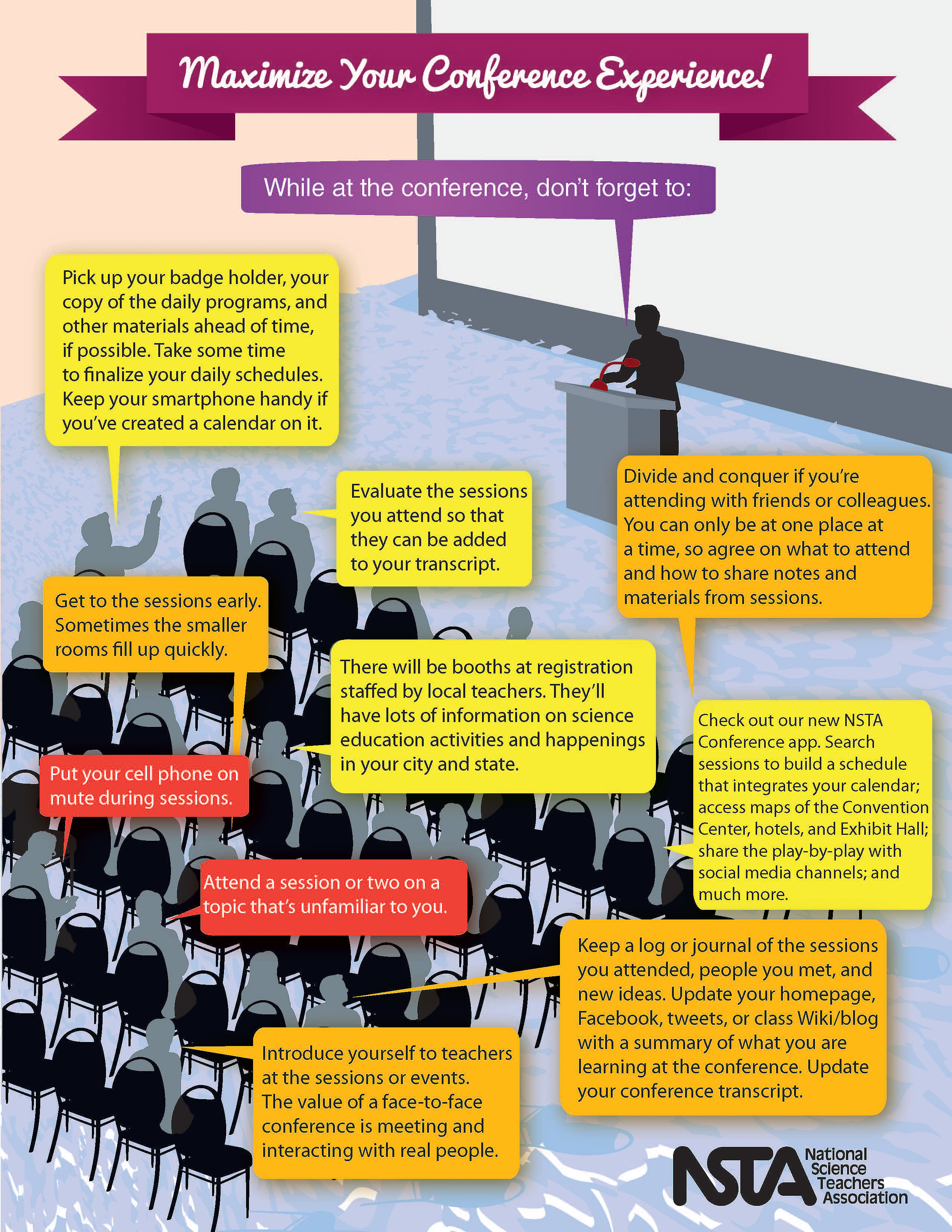 Share your experiences with your students. Use some of the promotional items you collected as prizes or gifts.
Share your experiences with your students. Use some of the promotional items you collected as prizes or gifts.- Organize and file your notes and handouts. Share the materials and what you learned with your colleagues.
- Send a note of appreciation to the administrator who approved your attendance at the conference.
- Write a brief article for the school or district newsletter, if appropriate.
- Access your transcript online to add to your professional portfolio.
- Get ready for next year!
Does anybody else have tips for conference newbies? Please leave a comment.
The mission of NSTA is to promote excellence and innovation in science teaching and learning for all.
Follow NSTA
| |
|
|
|
|
|
|
 Are you attending the 2015 NSTA National Conference on Science Education in Chicago March 12–15?
Are you attending the 2015 NSTA National Conference on Science Education in Chicago March 12–15?
Take 10% off all #NSTA Kids Books thru 2/23/15
By Lauren Jonas, NSTA Assistant Executive Director
Posted on 2015-02-13
NSTA Kids books are all on sale through February 23, 2015! Take 10% off the items below when you use promo code GIVEBK when you purchase these in the NSTA Science Store.
 Next Time You See a Seashell
Next Time You See a Seashell
(soft cover, e-book, mixed-media set, and library editions all included in the sale)
Bonuses for this book are available, including O-W-L chart + seashell anticipation guide
 Next Time You See a Sunset
Next Time You See a Sunset
(soft cover, e-book, mixed-media set, and library editions all included in the sale)
* A 2014 Outstanding Science Trade Book for Students K-12
* 2014 Winner of the REVERE Award from PreK-12 Learning Group, Association of American Publishers
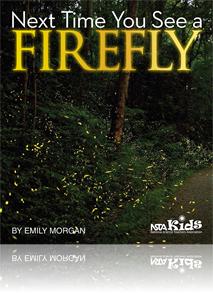 Next Time You See a Firefly
Next Time You See a Firefly
(soft cover, e-book, mixed-media set, and library editions all included in the sale)
READ a free sample chapter for this book: Firefly sample chapter
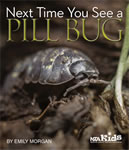 Next Time You See a Pill Bug
Next Time You See a Pill Bug
(soft cover, e-book, mixed-media set, and library editions all included in the sale)
“Especially designed to be experienced with an adult—be it a parent, teacher, or friend.”
 Next Time You See the Moon
Next Time You See the Moon
(soft cover, e-book, mixed-media set, and library editions all included in the sale)
WATCH: Fans of this book will also love this Moon Phases Demonstration on YouTube, produced by author Emily Miller.
 Next Time You See a Maple Seed
Next Time You See a Maple Seed
(soft cover, e-book, mixed-media set, and library editions all included in the sale)
READ a sample chapter: Next Time You See a Maple Seed sample
 Set of all six Next Time You See books paperbacks or library editions
Set of all six Next Time You See books paperbacks or library editions
WATCH the Next Time You See – NSTA Book Trailer on YouTube for these books and let author Emily Miller tell you how to wake up children’s natural sense of wonder!
 What Does an Animal Eat?
What Does an Animal Eat?
(e-book and mixed-media set included in the sale)
Read a sample chapter: What Does an Animal Eat?
 How Tall Was Milton?
How Tall Was Milton?
(e-book and mixed-media set included in the sale)
Read a sample chapter: Milton the Giant: I Wonder Why
 How Does a Plant Grow?
How Does a Plant Grow?
(e-book and mixed-media set included in the sale)
Read a sample chapter: Plants Can Grow Different Parts—How Do Plants Grow?
 What Makes Different Sounds?
What Makes Different Sounds?
(e-book and mixed-media set included in the sale)
Read a sample chapter: Ding Ding Ding
 What Can an Animal Do?
What Can an Animal Do?
(e-book and mixed-media set included in the sale)
Read a sample chapter: What Can an Animal Do?: I Wonder Why
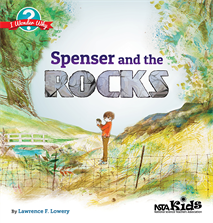 Spenser and the Rocks
Spenser and the Rocks
(e-book and mixed-media set included in the sale)
Read a sample chapter: Spenser and the Rocks sample
 Clouds, Rain, Clouds Again
Clouds, Rain, Clouds Again
(e-book and mixed-media set included in the sale)
Read a sample chapter: Clouds, Rain, Clouds Again sample
 How Does the Wind Blow?
How Does the Wind Blow?
(e-book and mixed-media set included in the sale)
Read a sample chapter: How Does the Wind Blow sample
 Up, Up in a Balloon
Up, Up in a Balloon
(e-book and mixed-media set included in the sale)
A 2014 Outstanding Science Trade Book for Students K-12
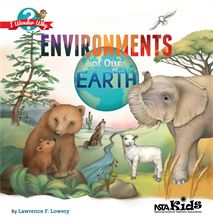 Environments of Our Earth
Environments of Our Earth
(e-book and mixed-media set included in the sale)
Read a sample chapter: Environments of Our Earth: I Wonder Why sample
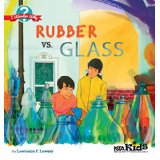 Rubber vs. Glass
Rubber vs. Glass
(e-book and mixed-media set included in the sale)
Read a sample chapter: Rubber vs. Glass: I Wonder Why sample
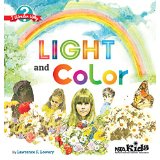 Light and Color
Light and Color
(e-book and mixed-media set included in the sale)
Read a sample chapter: Light and Color: I Wonder Why sample
 Sounds Are High, Sounds Are Low
Sounds Are High, Sounds Are Low
(e-book and mixed-media set included in the sale)
Read a sample chapter: Sounds Are High, Sounds Are Low: I Wonder Why sample
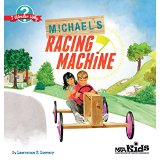 Michael’s Racing Machine
Michael’s Racing Machine
(e-book and mixed-media set included in the sale)
Read a sample chapter: Michael’s Racing Machine: I Wonder Why sample
 Dark as a Shadow
Dark as a Shadow
(e-book and mixed-media set included in the sale)
Set of all 15 I Wonder Why Books
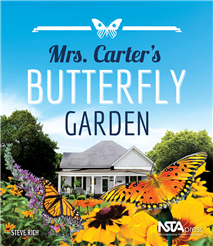 Mrs. Carter’s Butterfly Garden
Mrs. Carter’s Butterfly Garden
(e-book and mixed-media set included in the sale)
Read a sample chapter: Mrs. Carter’s Butterfly Garden sample
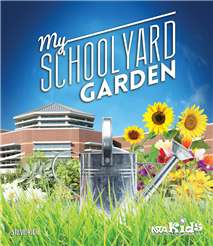 My School Yard Garden
My School Yard Garden
(e-book and mixed-media set included in the sale)
Read a sample chapter: My School Yard Garden sample
Follow NSTA
NSTA Kids books are all on sale through February 23, 2015! Take 10% off the items below when you use promo code GIVEBK when you purchase these in the NSTA Science Store.
Effective partnerships
By Mary Bigelow
Posted on 2015-02-12
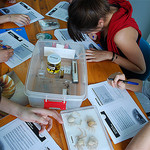 My school has been approached by a university to form a partnership to apply for grants for elementary science and math. What factors should we consider regarding this offer? —L., California
My school has been approached by a university to form a partnership to apply for grants for elementary science and math. What factors should we consider regarding this offer? —L., California
This could be a great opportunity to supplement or enhance the professional development, materials, programs, or technology in your school, especially if you have a tight budget. Before you agree, representatives from your school (including teachers and administrators) should meet with the university staff to ask questions, share ideas, and develop a project that will benefit all of the stakeholders (especially the students). I’ve been involved with several K-16 projects that had various interpretations of the word “partnership,” so from the beginning it’s essential to collaborate on a shared definition of terms and agreed-upon expectations for responsibilities and outcomes.
For example, in one very traditional project, the teachers attended workshops or courses conducted by the university during the school year. Teachers updated their content knowledge and became more familiar with technology and lab equipment. If you participate in this type of partnership, it is important to describe and assess not only what the teachers will learn, but also how this new knowledge will influence their classroom instruction.
In another project, university professors worked with teachers in hands-on activities over the summer on special topics aligned with the state science standards. During the school year, the professors visited the schools to interact with the K-6 students. Spending time in an elementary school was a new experience for them. They learned what challenges the teachers faced, including the variety of students (and size of the classes), the obligation to address state science standards, the type of equipment available in the schools, and the emphasis on testing in reading and mathematics. But they enjoyed the energy and enthusiasm of the students and were impressed by their questions and interest. The students had the opportunity to meet and work with real scientists. The disadvantage of this type of project is a “special event” atmosphere can occur. For any lasting impact, this should be an ongoing collaboration between the teacher and the professor, not just a few gee-whiz demonstrations by the professor while the teacher watches from the sidelines.
I’ve heard about mentoring projects during which teachers spent a summer working as research assistants at a university or science organization. They learned the content, lab procedures, and research models in use. They assisted with collecting and analyzing data. The teachers returned to their classrooms in the fall with new content knowledge, a sense of accomplishment, and insights into what is involved in scientific research. This type of mentoring required a commitment from both the teachers and the lead researchers. in addition, the teacher-researchers required training and background education on the research subject.
Then there are partnerships that give teachers access to the facilities of higher education: nature centers, museums, specialized equipment and expertise, tours of laboratories, access to library resources, invitations to special lectures or presentations, and field trip opportunities for students. Some higher education institutions have traveling science specialists that visit schools for demonstrations or assemblies.
Ask about the responsibilities the school will have in terms of recruiting teachers to participate, scheduling time, and providing support or materials. If the university staff will work directly with students, they may need clearances in compliance with state or local laws.
If the partnership is part of a university research project, teachers and students’ parents may be asked to sign consent or release forms, according to university policy. It should be clear what type of data the university will need to access or collect, for example student standardized test scores, observations, student pre-and posttests, teacher feedback, surveys, photographs/videos, or interviews. The ownership of any equipment should be established ahead of time, as well as who will be listed on any publications or press releases about the project.
In most partnerships, the K-12 teachers and the university faculty were compensated for the time they spend beyond their normal teaching duties.
Regardless of what your partnership project looks like, it will be important to ask: What happens at the end of the project? What knowledge, skills, materials, and self-confidence will the teachers have gained that will continue to improve student learning?
Photo: https://www.flickr.com/photos/xevivarela/4610711363/sizes/o/in/photostream/
Learn About Argumentation With NSTA Press Author Victor Sampson
By Wendy Rubin, Managing Editor, NSTA Press
Posted on 2015-02-10
Join NSTA Press author Victor Sampson in Orlando for workshops about scientific argumentation.
Scientific Argumentation in Biology
Attendees will receive a copy of the book Scientific Argumentation in Biology.
Date: Feb. 25, 2015
Place: Marriott Residence Inn Orlando at SeaWorld
Registration: 1 Day: $195/per person
Visit www.scientificargumentation.com/upcoming-workshops.html to register and learn more about the Scientific Argumentation Workshop.
Argument-Driven Inquiry in Biology
Attendees will receive a copy of the book Argument-Driven Inquiry in Biology.
Date: Feb. 26, 2015
Place: Marriott Residence Inn Orlando at SeaWorld
Registration: 1 Day: $195/per person
Argument-Driven Inquiry in Chemistry
Attendees will receive a copy of the book Argument-Driven Inquiry in Chemistry.
Date: Feb. 27, 2015
Place: Marriott Residence Inn Orlando at SeaWorld
Registration: 1 Day: $195/per person
Visit www.argumentdriveninquiry.com/orlando-feb-26–27-2015.html to register and learn more about the Argument-Driven Inquiry Workshops.
Questions? E-mail kristaclark.adi@gmail.com.
Join NSTA Press author Victor Sampson in Orlando for workshops about scientific argumentation.
Celebrate International Book Giving Day with NSTA, the Home of Science Literacy
By Lauren Jonas, NSTA Assistant Executive Director
Posted on 2015-02-09
 February 14 is not only Valentine’s Day but also International Book Giving Day. Literacy is an important focus for NSTA, and a subject that is personally important to our staff and membership, so we’re celebrating! What’s the day about? Giving books to children and promoting enthusiasm and excitement about books–and as you teach kids to cherish books, it’s important to teach them to care for them properly, so we’re loving the bookmark freebie available for download from the book giving day site!
February 14 is not only Valentine’s Day but also International Book Giving Day. Literacy is an important focus for NSTA, and a subject that is personally important to our staff and membership, so we’re celebrating! What’s the day about? Giving books to children and promoting enthusiasm and excitement about books–and as you teach kids to cherish books, it’s important to teach them to care for them properly, so we’re loving the bookmark freebie available for download from the book giving day site!
As an organization devoted to science teachers, we know that science and reading is a winning combination. For more than 40 years we’ve partnered with the Children’s Book Council to produce an annual list of Outstanding Science Trade Books for Students K-12. This year’s list has everything from Batman Science to Beetle Busters to Sally Ride. There’s something for students at every grade and interest level. If you’re looking for a great book to give or check out from the library, look no further.
If you’re a science teacher and want to incorporate science content into your reading program, we have some great resources that will save you time in the classroom and help you reach students in innovative ways (free registration in the NSTA Learning Center required).
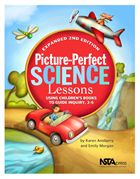 Why Read Picture Books in Science Class? This free e-book provides information on how to implement Picture-Perfect Science in your classroom—including key reading strategies and the first five chapters of the book Picture-Perfect Science Lessons, Expanded 2nd Edition: Using Children’s Books to Guide Inquiry, 3–6.
Why Read Picture Books in Science Class? This free e-book provides information on how to implement Picture-Perfect Science in your classroom—including key reading strategies and the first five chapters of the book Picture-Perfect Science Lessons, Expanded 2nd Edition: Using Children’s Books to Guide Inquiry, 3–6.- Teaching Science Through Trade Books This archived web seminar features Christine Royce, NSTA Member and Press author of Teaching Science Through Trade Books. In this free program, Dr. Royce shared strategies for using fiction and nonfiction children’s books to teach fundamental science concepts.
 Water Wherever Not sure how to incorporate books into science teaching? Find inspiration in this trade book–focused article from the NSTA journal Science and Children. Whether rain, sleet, or snow, February weather across the country provides students with opportunities to observe the many different ways the water cycle affects our daily lives. This article looks at the water cycle and looks at two trade books: The Snowy Day and The Drop in My Drink. Activities are provided for students in grades K–3 and 4–6.
Water Wherever Not sure how to incorporate books into science teaching? Find inspiration in this trade book–focused article from the NSTA journal Science and Children. Whether rain, sleet, or snow, February weather across the country provides students with opportunities to observe the many different ways the water cycle affects our daily lives. This article looks at the water cycle and looks at two trade books: The Snowy Day and The Drop in My Drink. Activities are provided for students in grades K–3 and 4–6.
Looking for more teaching resources that pair reading and science? Join a vibrant community of fellow learners who depend on the NSTA Learning Center. There, you can create your personalized learning journey based on your own unique learning needs and preferences. You can plan, track, and assess your progress over time. It’s free to register and connects you with a vast array of opportunities.
 Looking for new books to add to your library? Now through Monday, February 23, 2015, we’re offering 10% off all our NSTA Kids books (includes all NSTA Kids e-books, mixed-media sets, and sets). Use promo code GIVEBK at check out when you purchase these kid magnets in the NSTA Science Store.
Looking for new books to add to your library? Now through Monday, February 23, 2015, we’re offering 10% off all our NSTA Kids books (includes all NSTA Kids e-books, mixed-media sets, and sets). Use promo code GIVEBK at check out when you purchase these kid magnets in the NSTA Science Store.
So put February 14 on your calendar and join us as we celebrate International Book Giving Day. Here at NSTA we’ll be donating books to local schools via a staff book giveaway. Follow us on Twitter @NSTA to see pictures, and we hope you’ll share with us the creative ways you find to nurture the love of reading in your budding scientists! And don’t forget to teach them to respect books–if you’re looking for a lovely way to encourage your students to spread their literary wings, we offer this downloadable NSTA book mark to help them mark their progress. If you have a two-sided printer, you won’t want to miss the gorgeous art on the back.
Follow NSTA
 February 14 is not only Valentine’s Day but also International Book Giving Day. Literacy is an important focus for NSTA, and a subject that is personally important to our staff and membership, so we’re celebrating! What’s the day about?
February 14 is not only Valentine’s Day but also International Book Giving Day. Literacy is an important focus for NSTA, and a subject that is personally important to our staff and membership, so we’re celebrating! What’s the day about?
Heat and energy: what can young children understand?
By Peggy Ashbrook
Posted on 2015-02-09
 My cat has moved to the top of the radiator for the winter, at least when the boiler is on and warm air is moving up through convection from below. With a house temperature of 66*-68*F, I would also like to lie on it, hopefully with some sunshine radiating light and warmth through the window. “Radiating,” is that a word that children can understand? What vocabulary should we use to talk about the movement of “warmth” from one place to another? For preschool children we can begin with “”heat,” “hot,” “cold,” “warm,” “cool,” and “moving,” adding “transfer” as we have occasion to use it while talking with children about their experiences. For teacher background information about heat, read “Cool Facts About Heat” by Stephanie Chasteen on the Ohio State University online magazine for elementary teachers, Beyond Penguins and Polar Bears.
My cat has moved to the top of the radiator for the winter, at least when the boiler is on and warm air is moving up through convection from below. With a house temperature of 66*-68*F, I would also like to lie on it, hopefully with some sunshine radiating light and warmth through the window. “Radiating,” is that a word that children can understand? What vocabulary should we use to talk about the movement of “warmth” from one place to another? For preschool children we can begin with “”heat,” “hot,” “cold,” “warm,” “cool,” and “moving,” adding “transfer” as we have occasion to use it while talking with children about their experiences. For teacher background information about heat, read “Cool Facts About Heat” by Stephanie Chasteen on the Ohio State University online magazine for elementary teachers, Beyond Penguins and Polar Bears.
As a preschool teacher I am not confined to teaching concepts and vocabulary during a “unit” but can engage children in discussions and re-visit activities throughout the year. In summer, we might feel heat radiating from a metal sliding board or the blacktop. The metal and blacktop were warmed as they absorbed the radiation from the sun. Year round, we can experience the changing temperature of a cup of hot (warm) chocolate, a baked potato or a hard-boiled egg cooling down in our hands as the heat transfers to our hands and the surrounding air.
Another way of exploring the transfer of heat is to melt an ice cube in our hands. In the January 2006 Science and Children’s Early Years column I wrote, that “…keeping a child’s attention while a solid melts completely can be a challenge. That is why when exploring melting, it’s worth it to repeat the experience a few times with various substances, including chocolate and wax.” If melting ice doesn’t arouse a child’s curiosity, maybe melting chocolate will! Early childhood teacher and author Marie Faust Evitt engages her students in an activity involving heat transfer called “What is Your Cold Count?” where children make predictions. See photos on the Facebook page for her book, Thinking BIG Learning BIG.
In addition to providing experiences where children can observe the transfer of heat from one material to another, engage them in conversations and discussion about what they noticed and what they think about it. Heat is energy that is moving, going from one place to another. There is no rush for children to understand the concept of energy–it is enough to talk about the movement of heat. The Next Generation Science Standards Kindergarten performance expectation about energy, K-PS3-1, is, “Make observations to determine the effect of sunlight on Earth’s surface,” something children can do as they feel rocks or sand in sunlight and in shade.
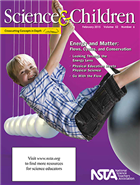 The February 2015 issue of Science and Children focuses on the Crosscutting Concept, Heat and Energy. The Teaching Through Trade Books column, “Understanding Matter and Energy” by Christine Anne Royce, and the Science 101 column, “How Should We Label Different Kinds of Energy?” by Bill Robertson are two resources that can help us understand the concept of energy, a fourth grade performance expectation in the Next Generation Science Standards. Read the Disciplinary Core Ideas in the box below the performance expectations to learn more about energy. Appendix E of the NGSS, “Progressions Within the Next Generation Science Standards” has progressions in student thinking about energy. A Framework for K-12 Science Education, a free download, the foundation for the NGSS, has an extensive section on energy, pages 120-130.
The February 2015 issue of Science and Children focuses on the Crosscutting Concept, Heat and Energy. The Teaching Through Trade Books column, “Understanding Matter and Energy” by Christine Anne Royce, and the Science 101 column, “How Should We Label Different Kinds of Energy?” by Bill Robertson are two resources that can help us understand the concept of energy, a fourth grade performance expectation in the Next Generation Science Standards. Read the Disciplinary Core Ideas in the box below the performance expectations to learn more about energy. Appendix E of the NGSS, “Progressions Within the Next Generation Science Standards” has progressions in student thinking about energy. A Framework for K-12 Science Education, a free download, the foundation for the NGSS, has an extensive section on energy, pages 120-130.
 Misconceptions may be held by children, and they may also be confused by words have different meanings or usages in every day and in scientific contexts. Jessica Fries-Gaither wrote about “Common Misconceptions about Heat and Insulation” on Beyond Penguins and Polar Bears. Fries-Gaither notes that, “many of these misconceptions are persistent and even developmentally appropriate. With the proper experiences and informal exploration in elementary school, students will be prepared to tackle these misconceptions in later years.”
Misconceptions may be held by children, and they may also be confused by words have different meanings or usages in every day and in scientific contexts. Jessica Fries-Gaither wrote about “Common Misconceptions about Heat and Insulation” on Beyond Penguins and Polar Bears. Fries-Gaither notes that, “many of these misconceptions are persistent and even developmentally appropriate. With the proper experiences and informal exploration in elementary school, students will be prepared to tackle these misconceptions in later years.”
In writing about this topic I turned to the NSTA online community for guidance. I wanted to check my understanding and find out what others thought young children can understand. Both the email listserv for NSTA members and the open-to-all forums in the NSTA Learning Center are terrific tools for connecting and learning from colleagues. Thank you all!


